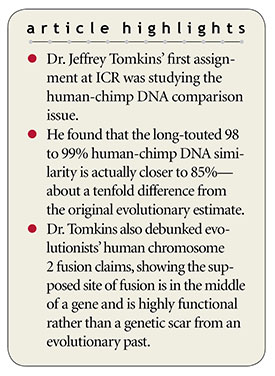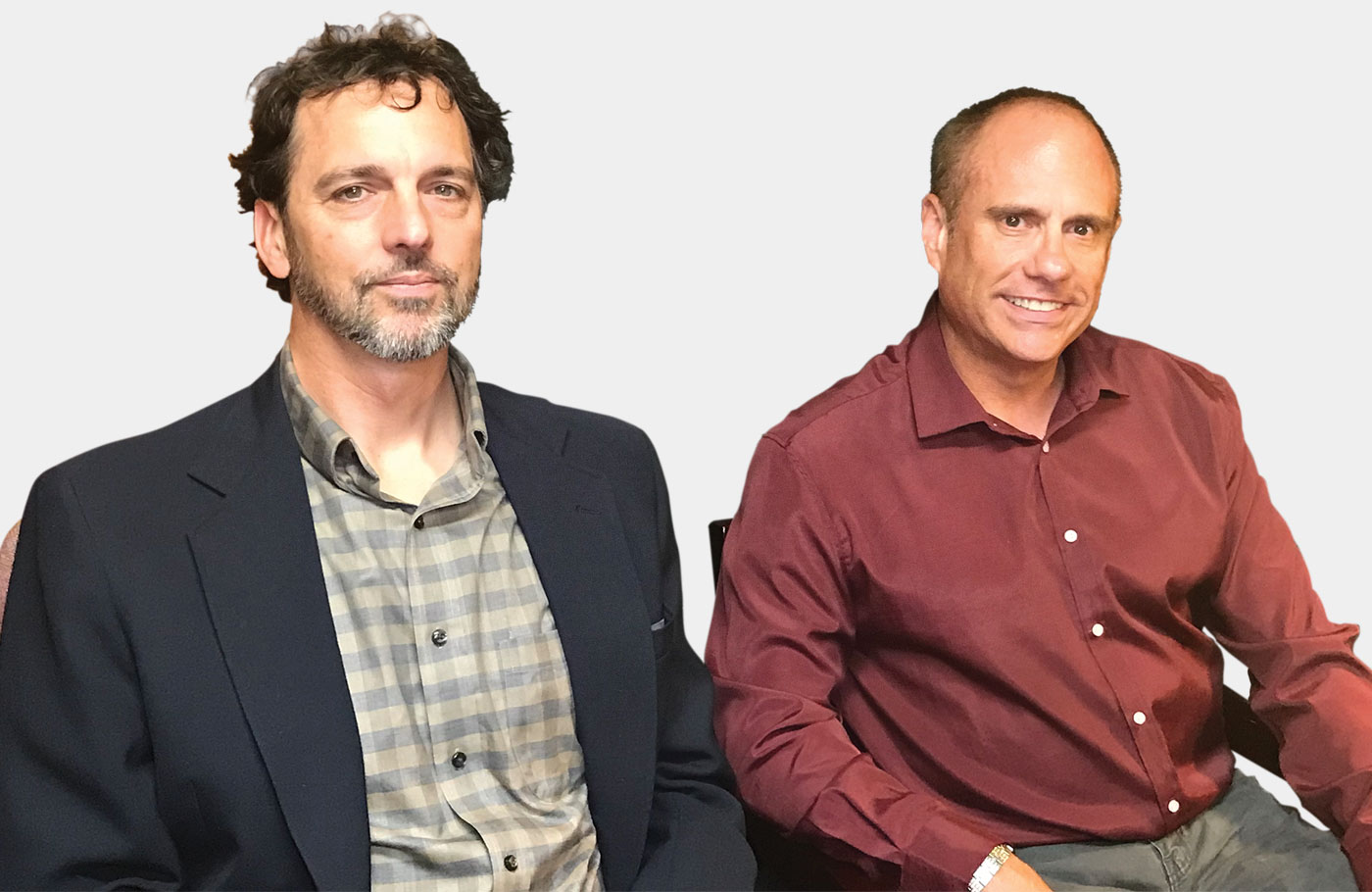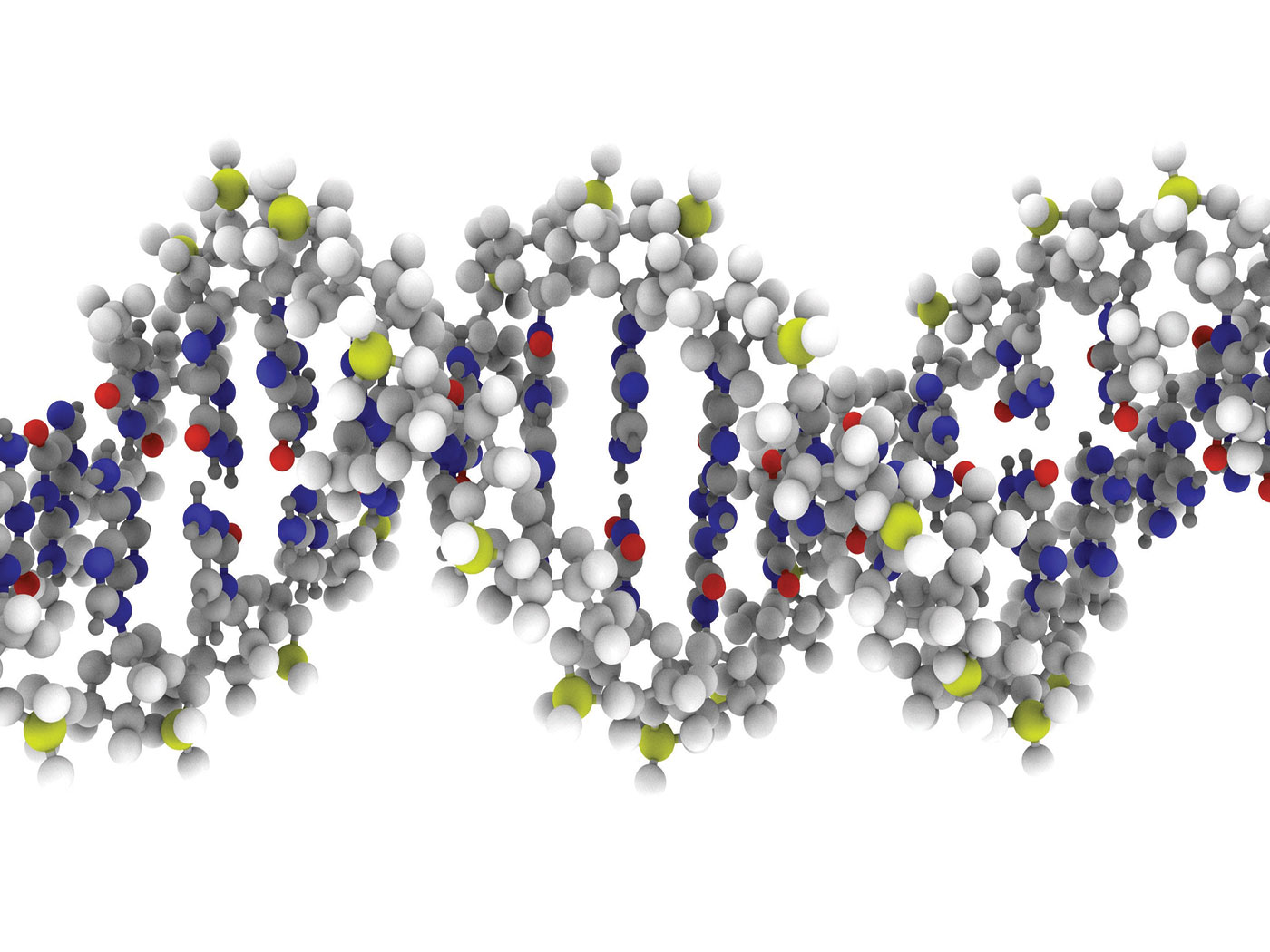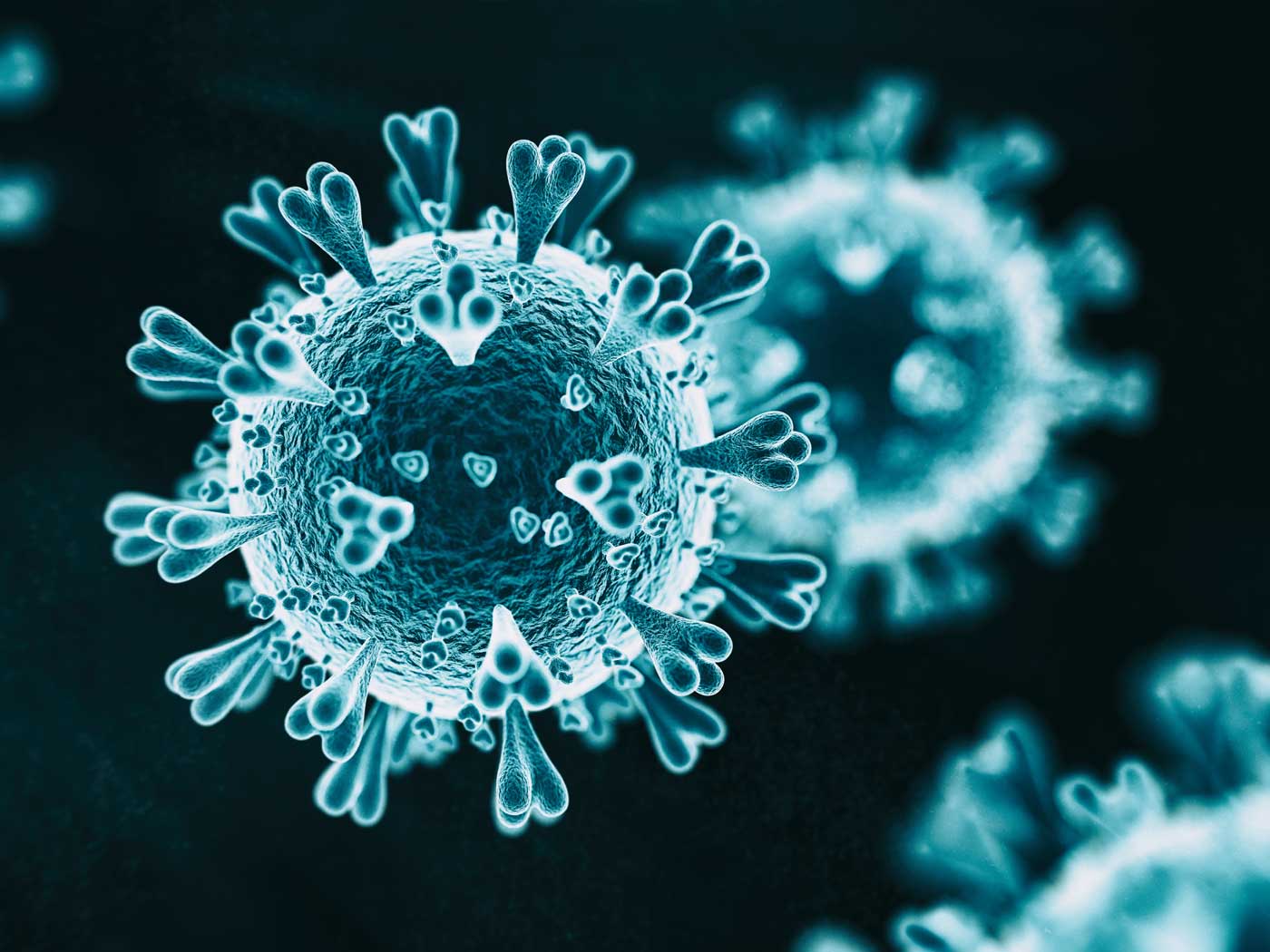Jeff Tomkins: Interview with a Geneticist
 Dr. Jeffrey P. Tomkins is Director of Life Sciences at the Institute for Creation Research. He recently spent time talking about his work with ICR Science Writer Brian Thomas.
Dr. Jeffrey P. Tomkins is Director of Life Sciences at the Institute for Creation Research. He recently spent time talking about his work with ICR Science Writer Brian Thomas.
Brian: I’m joined by Dr. Jeff Tomkins, who’s been a geneticist at ICR for over nine years. What motivates you to do this type of intense research?
Dr. Tomkins: My motivation started when I arrived here and was given the task of researching the human-chimpanzee similarity issue because people ask about this in churches. They hear the claim that humans and chimps are 98 to 99% similar. People want to know if that’s true. Before working here, I’d not investigated that issue. I ran a genome center for over five years and investigated various plants and animals but never the human-chimpanzee comparison. I went into it with an open mind and began reading all the literature on the subject—this started about eight years ago. I looked at the top six scientific publications that proposed a 98 to 99% DNA similarity between modern humans and modern chimpanzees.
Brian: A 98 to 99% genetic similarity between modern humans and modern chimps—why is that important?
Dr. Tomkins: It’s very important to theoretical evolutionists. The 98 to 99% claim is a theory—it’s speculative. They need a similarity that close to have humans and chimps evolve in the alleged three- to six-million-year timespan from a supposed human-chimpanzee common ancestor. Their statistical models need that 98 to 99% similarity.
Only a divine Creator could engineer something as complex as DNA. ![]()
 Brian: What did you find in the literature?
Brian: What did you find in the literature?
Dr. Tomkins: The first thing I noticed when I began reading these articles was that researchers were throwing out a lot of data. They were cherry-picking the areas of DNA between humans and chimps that were highly similar and throwing out areas, including areas that would not line up properly. Areas that don’t line up are dissimilar. When I researched the data, I was coming up with DNA similarities between 81 to 86% when I included the dissimilar data. I published a paper on this.1 This is way outside the realm of theoretical evolution.
Brian: What should the evolutionary community say about this?
Dr. Tomkins: They have reacted to a lot of my research since that first paper. There’s a lot of DNA sequence data that is publicly available in databases. I began working with the data myself, and over a number of years I refined my techniques. I used an algorithm developed by evolutionists that turned out to be a bad algorithm—so there’s been a lot of trial and error. But I finally got to the point where I published a paper in 2016.2 It was the most comprehensive study I’ve done yet, and I looked at all 101 data sets that went into originally building the chimpanzee genome.
I sampled 25,000 sequences at random from each of the data sets and then began analyzing and comparing them to human. Over half of the data sets were extremely similar to human, and the other half were extremely dissimilar to human. It appeared the initial chimpanzee genome was contaminated with human DNA, which is a huge problem in genomics.
There’s a number of studies by secular researchers showing that many public DNA databases, from bacteria to fish, have significant levels of human contamination. Human DNA literally gets into the samples. Contamination is a major issue. Human DNA comes from researchers’ fingers, coughing, sneezing, etc., and it gets into the samples. Now researchers are taking greater steps to alleviate that problem. This was especially prevalent back in the earliest phases of genome projects, when the chimpanzee was sequenced.
Brian: Wouldn’t some of the human DNA that made it into the raw data affect the results of any comparison analyses?
Dr. Tomkins: It has a huge effect because the chimpanzee genome is stitched together using the human genome as a scaffold. It’s like a puzzle—researchers used the human DNA “picture on the box” to assemble the chimp genome. The chimp DNA sequences used were all about 750 bases long. Not only was the chimp genome built using the human genome as a guide, it also has human DNA contamination in it, so it showed a lot of similarity from the contamination.
Brian: Even with those factors in place that skewed the data to a more human genome, is it closer to the 98% or the 86% maximum you observed?
Dr. Tomkins: It’s difficult to determine because it is a flawed product. I based my research on human-chimp similarity on the half of the data sets that appear to have much less human DNA. Based on my work, I’m seeing not more than an 85% DNA similarity of chimpanzee to human, and that’s a maximum. It’s probably less than that.
Brian: If that’s anywhere close, then there’s no feasible story to tell of how a chimp-like creature could’ve evolved into a human-like creature over three or even six million years.
Dr. Tomkins: Absolutely. There’ve been some recent biomedical researchers showing that any two human genomes could be 4.5% different from each other. We used to think that human genomes were only 99.9% similar to each other. But if we take the structural differences into account, there’s a 4.5% difference between humans. How then can we be 99% similar to a chimp? It’s totally nonsense.
Brian: It sounds like a game-changer. Let me back up. You used to run a genome lab. What was life like back then?
Dr. Tomkins: In our lab at Clemson University, we were mainly interested in exploring new genomes. We’d explore the genomes of some strange creatures like fire ants, shrimp, oysters, ticks, corn, peaches, soy beans, etc. I looked at a lot of plant and animal genomes, and we’d map out the genomes and sequence their DNA. We’d run a special type of DNA sequencing where we’d sequence only the genes by extracting and sequencing the RNA, and also sequence the genomic DNA as well. When we’d take these sequences and compare them to other plants and animals, we’d see a small core set of genes shared between different plants or animals, but then you’d have a whole lot of other genes that were unique to each type of organism that you couldn’t find any match for in databases. So, things were not matching up with evolution’s predictions and models. But things were matching up with what a Divine Engineer would use. The Bible talks about creatures created after their own kind. There’d be repeated code just like a computer programmer would use to perform basic functions, and we’d see unique code that was creature-specific. In other words, we saw unique genomes specific to a created kind, just as predicted by the Bible.
Brian: This was a secular institution?
Dr. Tomkins: Yes, at Clemson University, and we had a lot of federal funding and worked on a lot of interesting collaborative projects with researchers at other universities. It was a lot of fun.
Brian: What is the next stage in your work on the human-chimp research?
Dr. Tomkins: I’m still working on it. There is a new version of the chimp genome. I’m researching how accurate it is. I’ve also been looking into the DNA sequences that were used to build it. They are called contigs, which are stitched-together, long regions of DNA that were not assembled using human DNA as a guide. I’m basically seeing the same very low level of similarity that I’ve seen before. It appears my new research is validating what I’ve previously discovered. There’s more work to be done to finish this project.
Brian: You’ve done eight years of research on the human-chimp genome comparison. How should Christians feel about this area of research? Put yourself in the mind of a pastor who has no idea about genetics but for years has heard about the 99% similarity. Who should he believe, and why?
Dr. Tomkins: I have the hard data to show what I’m saying. I’ve published that in papers that are open to the public. The data sets I’ve used are available to the public. The computer programs I’ve written are on the internet and open to the public. The algorithms are provided by the federal government and the National Institutes of Health, and those are open to the public. Nothing is hidden—anyone can repeat my research and see for themselves. I’m not getting a lot of kickback from evolutionists because they know what I’m doing is totally valid. And they know all my methods are out there and can be repeated, and they’ll get the same results.
I’m getting a lot of silence from most professional academics. There are a few evolutionary-evangelist types who don’t do real research. They’ve been complaining about my research—and most of what they’ve said is totally invalid.
Brian: What about the people in the pew who feel browbeaten and say, “I guess the Bible says I came from Adam, but I don’t know, maybe Adam came from apes because we’re so genetically similar.” How would you respond to that type of thinking?
Dr. Tomkins: When I talk to people in churches, I basically explain what I’m telling you right now, and I try to do it in terms most people can understand. And people are relieved to know there are scientists out there taking the data evolutionists have produced and looking at it objectively and finding results that contradict evolution.
Brian: Give us a nutshell on your spiritual journey. Did you always believe in creation?
Dr. Tomkins: I was raised in a home that was secular-evolution based. Although we went to a denominational church, my father was an evolutionist and a big fan of Carl Sagan. After high school, I went to Washington State University and had a Christian roommate who shared the gospel with me, and I became a Christian. However, the issue of origins was confusing, and I was being bombarded with evolution by my professors. I initially bought a book where the author tried to combine evolution with the Bible, but it was unconvincing. Then I found a book called Scientific Creationism by Dr. Henry M. Morris, and it all meshed—science fit the Bible.3 There were no contradictions, and the science was totally solid. I saw there was no hard scientific evidence for evolution and that the facts of science lined up well with the Scriptures. I was about 22 years old at the time, and I quickly became a creationist right after becoming a Christian, thanks to ICR and Henry Morris.
Brian: Did you find it difficult to get your degrees at a secular college?
Dr. Tomkins: My master’s degree was challenging because it was my first experience in graduate school and I had a tough advisor. But God was teaching me how to do scientific research. When I got my Ph.D. in genetics at Clemson, I was really blessed because I had a professor who was a strong Christian, and I’d been well-trained during my master’s degree program. I was doing work in quantitative genetics—more of a classical-type field. I had good graduate committee members who were very helpful, and I kept a low profile regarding my creation science beliefs.
Brian: Did you struggle at all in that secular work environment, maintaining a low profile?
Dr. Tomkins: When I was working as a faculty member in the Department of Genetics and Biochemistry at Clemson and running a genome center, I had to keep a low profile. Fortunately, I was in a technology-based field doing applied genetics research and wasn’t deeply involved in theoretical evolution. It was very basic research—how is this genome put together, how is it structured? How is it similar to other genomes, how is it different?
Brian: Then you moved to ICR. What precipitated your switch?
Dr. Tomkins: I’d been communicating with scientists at ICR since the late 1990s. We had a genome conference every year in San Diego, where ICR used to be located, and I would drop in to visit. I kept up that relationship when they moved to Dallas. ICR had a research initiative called the Gene Project—a DNA analysis project. I had consulted on this for several years. Then I felt it was a good time to make the move out of secular academics since ICR needed more geneticists to be involved. Most of my grants had finished up, and it was a good point to end things at Clemson and make the move to ICR. Plus, I was limited—I couldn’t say anything bad about evolution or promote creation science. I felt the need to use my talents and what remained of my life to further the gospel of Jesus Christ and creation science.
Brian: I for one am thrilled that you made that switch, and it’s been a pleasure and a joy to know and work with you and to see the amazing fruits of your research. Anything else you’d like to talk about?
Dr. Tomkins: I’d like to talk about chromosome fusion.
Brian: And this is a subset of the chimp-human DNA study?
Dr. Tomkins: Yes. When I first started working for ICR, we had some visitors. One mentioned that an evolution-promoting book called Relics of Eden discussed something called chromosome fusion, and it negatively affected their son’s faith.
Apes have 48 chromosomes, but humans have 46. So, evolutionists have a discrepancy in chromosome numbers and need a solution that somehow makes us more closely related genetically. They believe two ape chromosomes fused end-to-end and formed a single chromosome—human chromosome 2. They actually found a sequence that appeared to support that idea. There’s a stretch of DNA with some telomere-like sequences (like the ones found at the ends of chromosomes) in the middle of chromosome 2. They called this the “fusion site.”
So, I looked at the alleged fusion site more closely to see how strong the evidence really was. It turns out these telomere sequences are quite degraded, and the signature is quite small if two telomeres had actually fused. Human telomeres are 5,000 to 15,000 bases long, so if you had two chromosomes fuse you should have something 10,000 to 30,000 bases long. But the fusion site’s sequence is less than 800 bases. I also noticed this so-called fusion sequence was inside a gene, and I published this research in 2013, with a follow-up paper with more research in 2017.4,5 Sure enough, the supposed fusion sequence is inside a gene, and it’s a promoter, or a switch inside a gene. It debunks the concept of fusion. I also found a number of proteins that bind to turn on this switch, along with RNA transcripts being produced from this region. So, the evidence is overwhelming—it’s a promoter inside a gene. In another, unpublished project, I found telomere-like sequences all over the human genome acting as genetic switches.
Brian: So, they’re not genetic junk or scars.
Dr. Tomkins: In a chromosome fusion, there should be two genetic scars, and you should have a fossil centromere in addition to the fusion site. As it turns out, the so-called fossil centromere is also in the middle of a gene, a huge protein-coding gene! This alleged fossil would be impossible to form in a fusion. So, fusion is debunked.5
Yes, yes, we did come from Adam. Our DNA is unique. We are human! ![]()
Brian: To wrap up, how would you describe the way an evolutionist approaches these DNA questions?
Dr. Tomkins: All evolutionists have a presupposition that we all share a common ancestor with other living things. Everything we see today supposedly descended from an ancestral cell. They have a presupposition that all life is connected through evolution. That’s how they approach everything. They are saying, “What does the data look like in light of evolution?” Even all the scientific terms they use are cloaked in evolutionary verbiage.
Brian: Your research has done some heavy lifting in the debunking of these icons of evolution. Can you provide some evidence for creation? You want the church to know that we’re designed, God made us. What would you say to that?
Dr. Tomkins: Look at the complexity of the genome and all the different codes that operate within it. We not only have the basic genetic code, but we also have many different codes just like a computer system has different kinds of programming languages. The genome is the same way—we have all these different codes in DNA, RNA, and proteins operating together, and they are so complex. They go way beyond anything humans could create. Even just within the DNA, you have code that goes forward and backward, genes that overlap other genes. Only a divine Creator could engineer something this complex.
Brian: It would be like reading a book and then turning that book over and having it read something else backward and upside-down. Thank you, Dr. Tomkins, for switching over from your secular work to answer some of the toughest questions the church faces when they try to figure out “Did I really come from Adam?” What a joy to know your work says, “Yes, yes, we did come from Adam. Our DNA is unique. We are human!” I appreciate all you’ve done, and I hope we can do more to notify others about your work.
References
- Tomkins, J. and J. Bergman. 2012. Genomic monkey business—estimates of nearly identical human-chimp DNA similarity re-evaluated using omitted data. Journal of Creation. 26 (1): 94-100.
- Tomkins, J. P. 2016. Analysis of 101 Chimpanzee Trace Read Data Sets: Assessment of Their Overall Similarity to Human and Possible Contamination With Human DNA. Answers Research Journal. 9: 294-298.
- Morris, H. M. 1985. Scientific Creationism. Green Forest, AR: Master Books.
- Tomkins, J. P. 2013. Alleged Human Chromosome 2 “Fusion Site” Encodes an Active DNA Binding Domain Inside a Complex and Highly Expressed Gene—Negating Fusion. Answers Research Journal. 6: 367-375.
- Tomkins, J. P. 2017. Debunking the Debunkers: A Response to Criticism and Obfuscation Regarding Refutation of the Human Chromosome 2 Fusion. Answers Research Journal.10: 45-54























